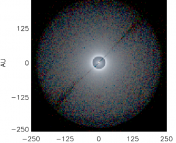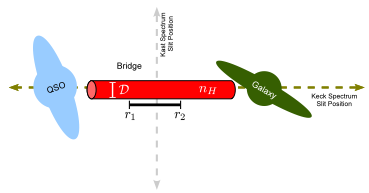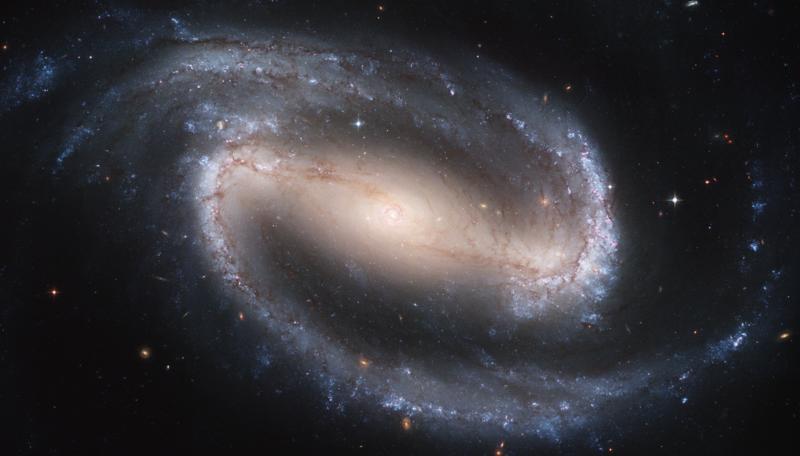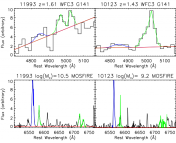The Undergraduate Research series is where we feature the research that you’re doing. If you are an undergraduate that took part in an REU or similar astro research project and would like to share this on Astrobites, please check out our submission page for more details. We would also love to hear about your more general research experience!
Kassidy Kollmann
University of Maryland, Baltimore County

This guest post was written by Kassidy Kollmann. Kassidy Kollmann is a senior undergraduate student studying Physics and Astrophysics at the University of Maryland, Baltimore County (UMBC). She conducted this project through a sustained research experience in UMBC’s High Energy Astrophysics Group with her research advisor, Dr. Eileen Meyer. This project was presented at the 237th AAS Meeting and the results are currently in preparation for submission to the Monthly Notices of the Royal Astronomical Society.
Supermassive black holes (SMBHs) lie at the center of all massive galaxies. A small percentage of galaxies are classified as active galactic nuclei (AGN) and are powered by the accretion of material onto the SMBH. ‘Radio-loud’ AGN emit large-scale jets of plasma that propagate away from the central SMBH at relativistic speeds. These jets can reach scales of hundreds of kiloparsecs or more. Figure 1 shows a 17.7 GHz Australia Telescope Compact Array (ATCA) image of one of the sources examined throughout this project, PKS 2101-490. The central bright source is the highly luminous base of the jet (i.e. the ‘core’) and the location of the black hole. The clumpy features in the jet are known as ‘knots’ and are believed to be either moving packets of energized plasma, or possibly semi-stationary shock features in the jet where particle acceleration occurs. The final knots/features in the jet are known as ‘hotspots’, as they are often much brighter than other parts of the jet.
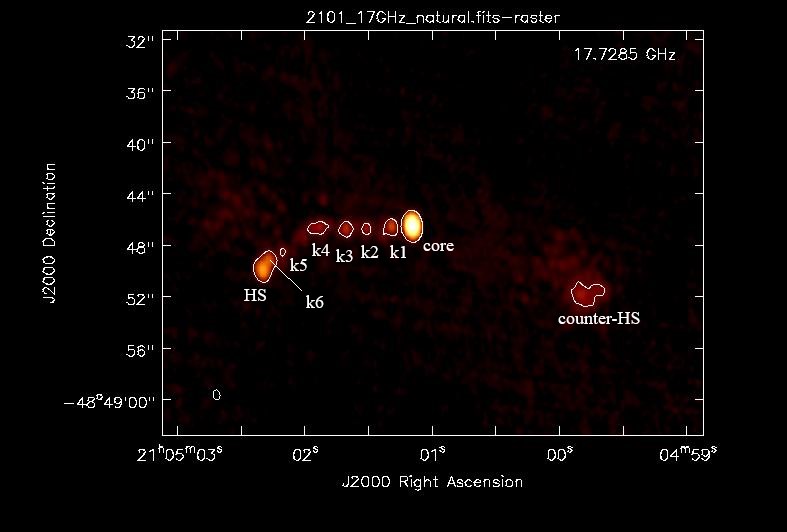
AGN jets are known to interact with the intergalactic medium, impact star formation on galactic scales, and play a role in galaxy evolution. Despite the importance of understanding how these jets impact their surrounding environment, many properties of AGN jets are not well understood. This project aims to increase our understanding of the emission mechanisms responsible for the AGN jet emission on ‘large’ scales (a few to hundreds of kiloparsecs). It was previously believed that the radio through optical/UV jet emission on these scales (far from the SMBH) was due to a single continuous synchrotron spectrum generated by relativistic electrons in a magnetized jet.
For this project, I reduced radio observations from ALMA and VLA, as well as optical observations from the Hubble Space Telescope, to create spectral energy distributions for each knot in the jets. This led us to discover multiple jets displaying a synchrotron spectrum that unexpectedly turns over at approximately 100 GHz, and hence does not account for the optical/UV emission. This can be seen in Figure 2, which shows preliminary spectral energy distributions for the knots of PKS 2101-490. As a result of this turnover, in addition to the X-ray spectral hardness of our sources, we conclude that at least three distinct emission components are required to fully explain the AGN jet emission. This is an ongoing project and we are continuing to use high-resolution ALMA observations to search for more sources that exhibit this sub-mm turnover in the jet spectral energy distributions. We also intend to explore possible emission mechanism models such as the presence of multiple synchrotron components, inverse Compton emission, and leptohadronic models, as discussed in Meyer et al. (2018) and the forthcoming paper Meyer, Kollmann et al. (2021).
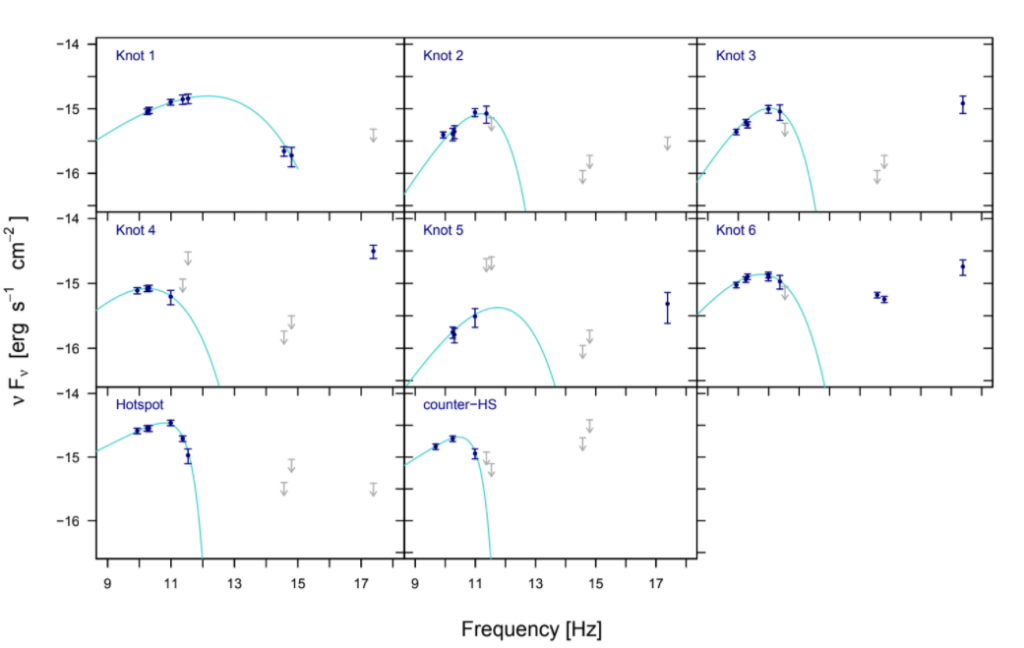
Astrobite edited by: Ellis Avallone

